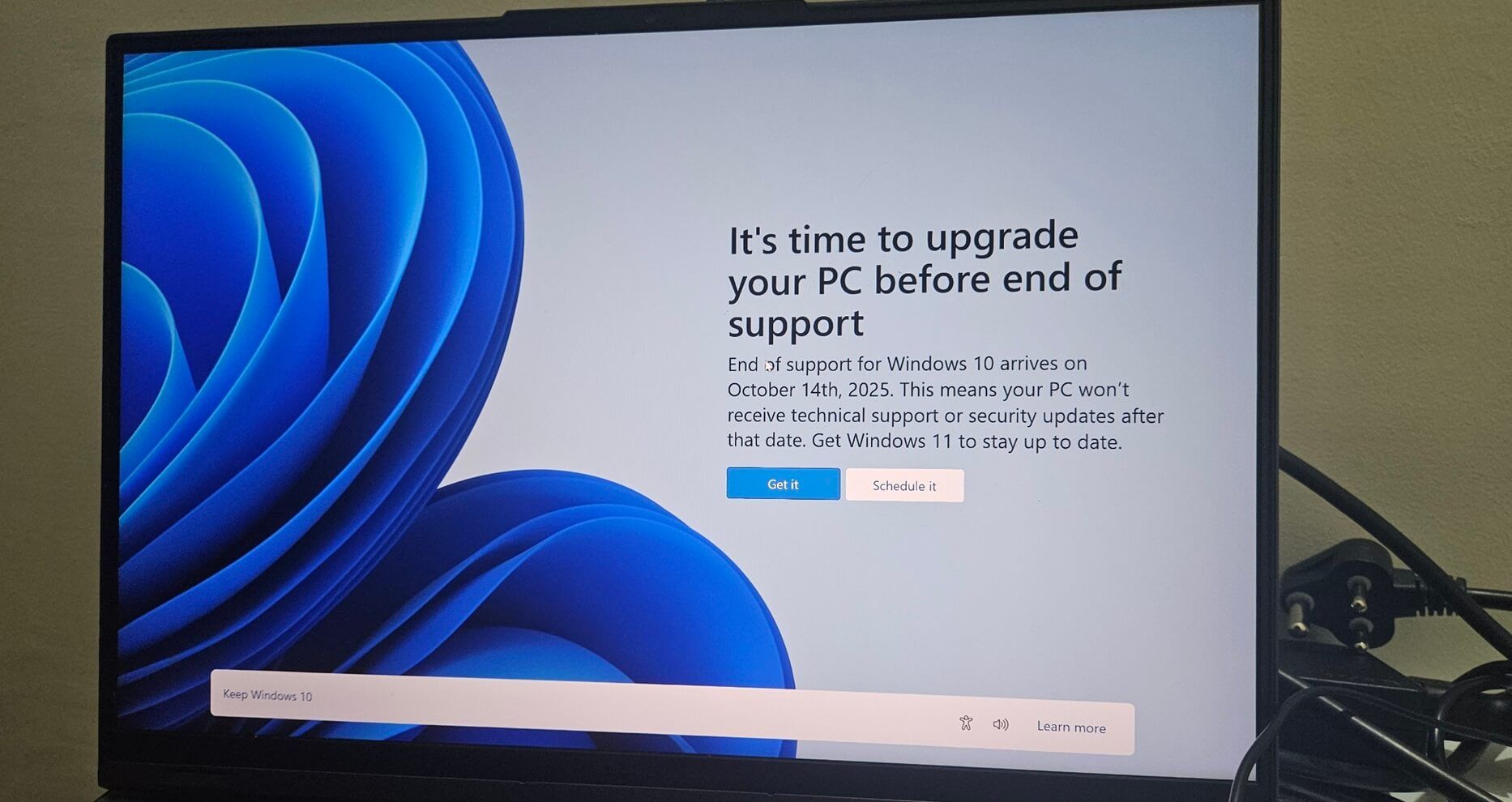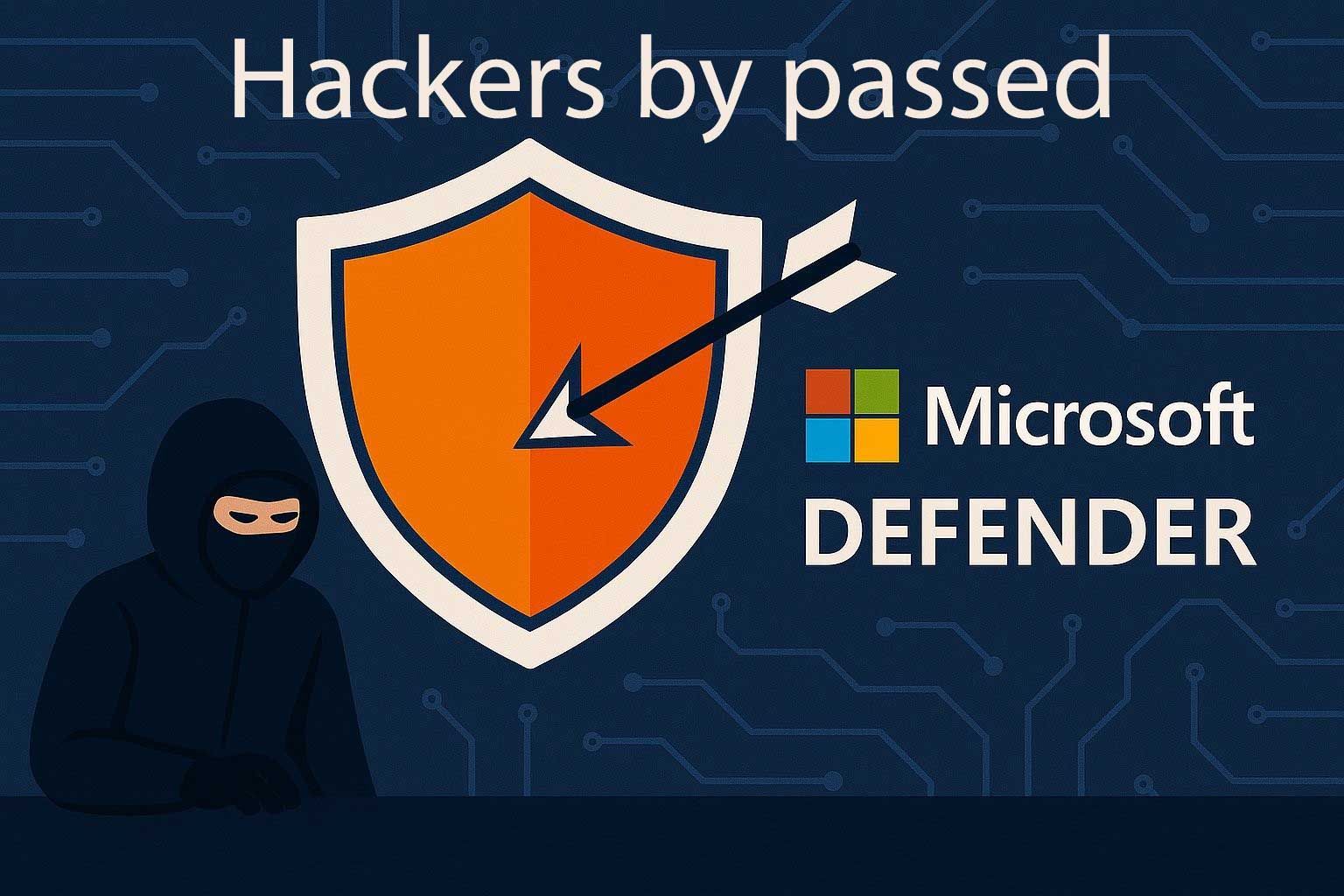pc-repair-local


IT Specialist
Author: This article is written by Rick Patin, an IT professional serving Middle Tennessee for over 10 years. Drawing on real experiences with clients in Hendersonville, TN, Gallatin, TN, Goodlettsville, TN and surrounding areas. Rick shares proven solutions and firsthand tips for consumers and small business computer cybersecurity and repair.
The Ultimate Guide to PC Repair Local for Beginners (2025)
Is your computer running slower than ever or refusing to start? You're not alone—countless people face the same headaches every day. Thankfully, pc repair local options have become more accessible in 2025, making it easier for anyone to get their computer back on track.
This guide is designed to take the mystery out of PC repair for beginners. You'll discover practical steps, expert advice, and helpful local resources so you can confidently tackle common computer problems right at home.
We'll walk you through essential tools, show you how to diagnose issues, outline step-by-step repairs, help you recognize when to call in the pros, and share tips to keep your PC running smoothly. Ready to take control? Let’s get started!
Understanding PC Repair: What Every Beginner Needs to Know
Navigating the world of pc repair local can feel overwhelming, especially if you’re just starting out. Yet, with technology woven into daily life, knowing how to address common computer issues is more important than ever. Local repair solutions are not only convenient but can also save you time, money, and stress.
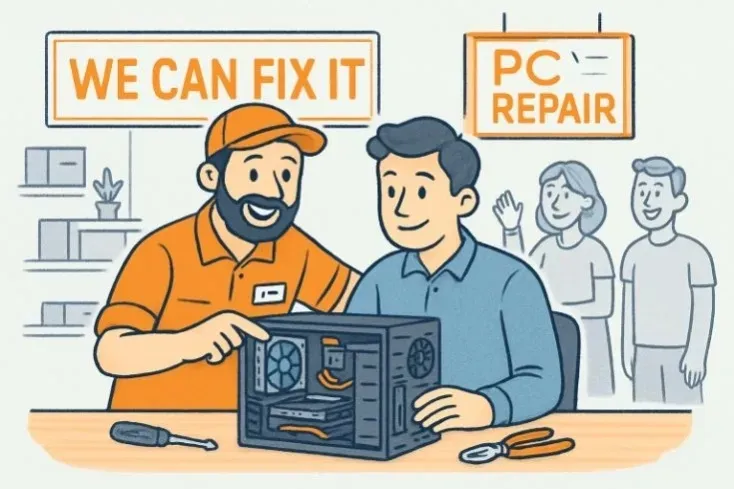
The Importance of Local PC Repair Services
Choosing pc repair local over remote or DIY fixes offers a host of advantages. Local shops often provide faster turnaround, direct communication, and a personal touch that remote services can’t match. According to TechRadar (2024), 72% of users prefer local repair shops for urgent issues, highlighting their growing role in communities.
Common issues handled by local experts include hardware failures, virus removal, and data recovery. Here’s a quick comparison of average repair costs:
| Service Type | Average Cost | Typical Turnaround |
|---|---|---|
| Local PC Repair | $125 to $199 | 3-5 business days |
| Manufacturer Center (apple motherboard repair) | $350–$499 | 10–15 days |
Supporting pc repair local businesses isn’t just about convenience—it’s also environmentally responsible. Local repairs reduce e-waste by extending device lifespans and supporting small businesses. For example, one user avoided a costly replacement and had their laptop running in hours by visiting a trusted neighborhood technician.
The rise of certified professionals means you can find Local PC repair solutions with confidence. Certified shops often display credentials like CompTIA A+ or Microsoft certifications, ensuring expert service.
Common PC Problems Faced by Beginners
Beginners often encounter slow performance, startup failures, blue screens, and overheating. These issues can be hardware-related, such as failing RAM or hard drives, or software-based, like viruses and corrupted files. Understanding the difference is key to effective pc repair local troubleshooting.
Watch for warning signs: repeated crashes, strange noises, or persistent error messages often indicate hardware problems. Software issues might show as sluggishness, pop-ups, or application errors. PCMag’s 2024 case study found slow speeds and startup failures were the most common repair requests.
Data loss is a major risk during repairs. Always back up important files before starting any fix. Preventative strategies include using reliable antivirus software and setting up regular backups. Recognizing symptoms early can save time and protect your data investment.
Local vs. Remote and DIY Repair: Pros and Cons
When considering pc repair local, it’s helpful to weigh your options. Local shops offer accessibility—you can drop off your device and speak directly with a technician. This hands-on approach is invaluable for hardware issues, which remote diagnostics can’t always resolve.
DIY repair appeals to many for cost savings but comes with risks. Opening your device may void warranties or cause accidental damage, especially for beginners. Security is another concern; handing over your PC to any service means trusting them with your personal data. Reputable local shops prioritize data protection and transparency.
Remote repair is convenient for software fixes but falls short for physical problems. Ultimately, knowing your limits and choosing the right approach ensures your computer is fixed safely and efficiently.
Essential Tools and Safety for PC Repair at Home
Getting started with pc repair local can feel overwhelming, but assembling the right tools and following basic safety steps makes it manageable—even for beginners. Before you open up your computer, let’s look at what you’ll need, how to stay safe, and how to create a workspace that sets you up for success.
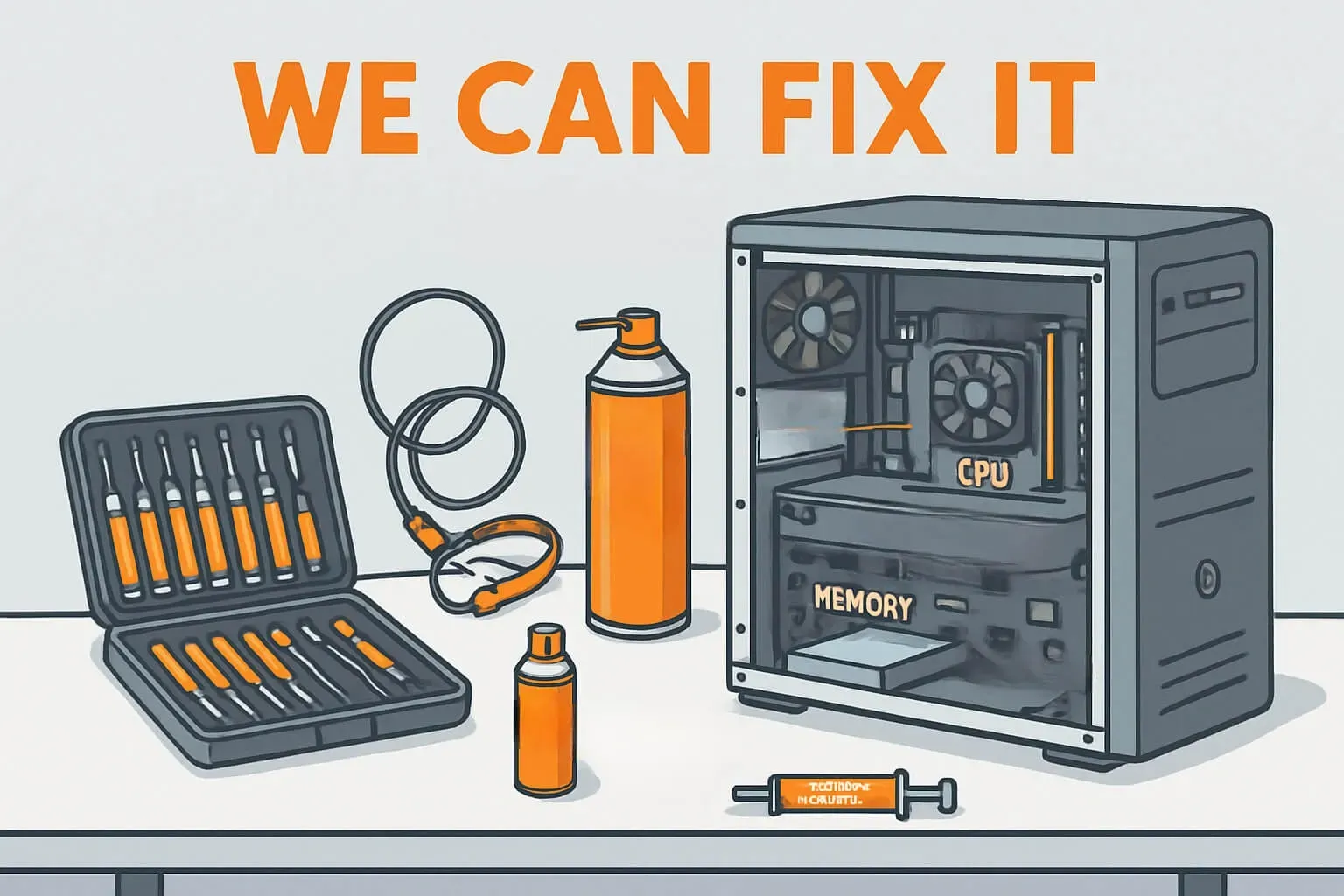
Basic Tools Every Beginner Should Have
Every successful pc repair local project starts with a handful of essential tools. At the very least, you’ll need:
- Phillips and flathead screwdrivers (magnetic tips are a plus)
- Anti-static wrist strap to prevent damaging sensitive components
- Compressed air for dust removal
- Thermal paste for reseating CPUs or heatsinks
Investing in a complete toolkit designed for pc repair local can save time and headaches. Look for kits that include tweezers, spudgers, and various driver bits. For an up-to-date list of the Best PC Repair Toolkits 2025, check out detailed reviews before buying.
You can find quality tools at local electronics stores, hardware shops, or big-box retailers. Always inspect tools for durability and comfort—your hands will thank you during longer repairs.
Safety Precautions Before Starting Repairs
Safety is non-negotiable when tackling pc repair local tasks at home. Begin by unplugging your PC and holding down the power button for a few seconds to discharge any leftover electricity. Always wear your anti-static wrist strap and clip it to an unpainted metal part of the case.
Avoid working on carpeted surfaces, as static can damage RAM, CPUs, and motherboards. Handle all components by the edges, and never force parts into place.
Common beginner mistakes include forgetting to ground yourself, losing screws inside the case, or accidentally disconnecting cables. Double-check each step and keep a checklist handy to stay on track and safe throughout the process.
Setting Up an Efficient Repair Workspace
A tidy, well-lit workspace is crucial for effective pc repair local work. Choose a sturdy table with plenty of light and good ventilation. Proper airflow keeps you comfortable and prevents dust buildup.
Keep your tools organized in a tray or magnetic mat. Use small containers or labeled bags for screws and tiny parts to avoid losing them. Wipe down your area before starting and clean as you go to prevent static and dust from interfering with your work.
By maintaining a clean, organized space, you’ll not only make repairs easier but also reduce the risk of mistakes—key for anyone new to pc repair local.
Step-by-Step Guide: Diagnosing and Fixing Common PC Issues
Tackling PC problems can feel overwhelming, but with a clear, step-by-step method, even beginners can get results. This guide breaks down the process, making pc repair local easier and more approachable. You’ll learn what to do first, how to spot the real issue, and the safest ways to fix it yourself.
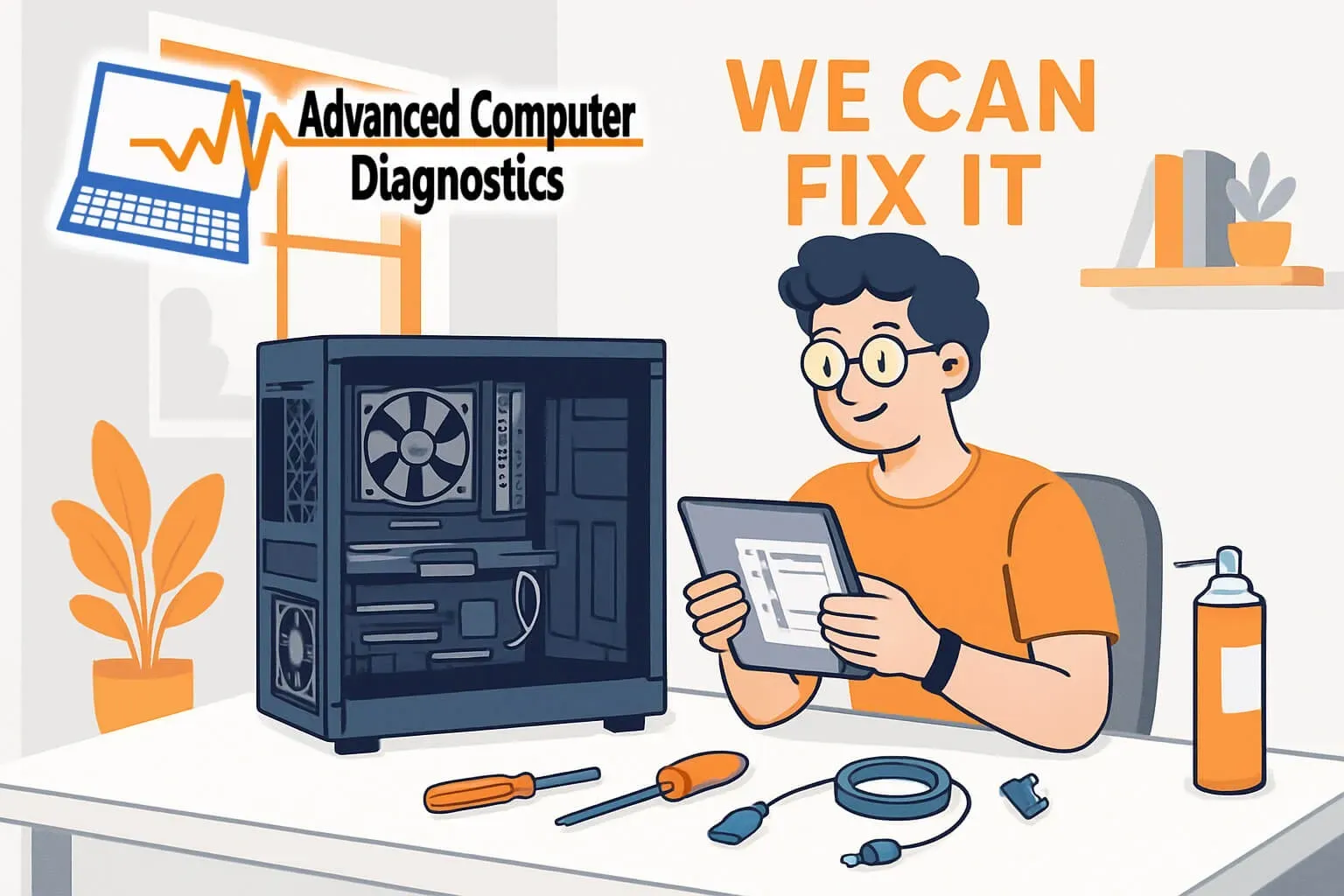
Step 1: Initial Assessment and Backup
When your PC starts acting up, resist the urge to dive straight into repairs. The first step in any pc repair local process is to observe and document. Take note of error messages, strange noises, and when the problem occurs (on startup, during heavy use, etc.).
Before making any changes, always back up your important files. Use an external drive or PC SafeLock. Windows users can create a system restore point by searching “Create a restore point” in the Start menu and following the prompts:
Control Panel > System > System Protection > Create
This step ensures you can roll back if something goes wrong. If your PC won’t boot, try accessing Safe Mode or using a live USB to save your data.
- Observe symptoms and timing.
- Document error codes and messages.
- Back up files before attempting fixes.
- Create a restore point for extra safety.
Starting with these precautions helps prevent data loss and sets a solid foundation for the rest of your pc repair local journey.
Step 2: Troubleshooting Startup and Boot Problems
Startup issues are among the most common headaches for PC owners. Listen for POST (Power-On Self-Test) beep codes when you power on. A single beep usually means all is well, while patterns of beeps can signal hardware problems. Refer to your motherboard manual for specifics.
Check all power connections, both inside and outside the case. A loose cable can easily halt your progress. If the PC powers on but doesn’t boot, try removing unnecessary peripherals and booting into Safe Mode.
Here’s a quick table to help you diagnose:
| Symptom | Likely Cause | What to Try First |
|---|---|---|
| No Power | PSU, Cable, Outlet | Check/replace power cable, test PSU |
| Beeps, no display | RAM, GPU, Motherboard | Reseat RAM/graphics card |
| Boot loop | Software, OS issue | Boot Safe Mode, system restore |
If you’re unsure whether the problem is hardware or software, Signs your computer needs repair can help you decide when to seek pc repair local assistance.
Document each step as you go. This helps if you need to explain the situation to a professional later.
Step 3: Addressing Performance and Software Issues
Slow performance, freezing, or random restarts can stem from overloaded software, malware, or outdated drivers. For effective pc repair local troubleshooting, start by disabling unnecessary startup programs. Open Task Manager (
Ctrl + Shift + Esc
), click the “Startup” tab, and turn off non-essential items.
Next, run a trusted antivirus and malware scan. Remove any threats found. Outdated or corrupt drivers can also cause trouble. Visit your hardware manufacturer’s site or use Windows Update to check for driver updates.
- Disable unneeded startup apps.
- Scan for viruses/malware.
- Update drivers and Windows.
- Uninstall unused software.
If problems persist, note the symptoms. Sometimes, software issues mask deeper hardware problems, which may require further pc repair local investigation.
Step 4: Solving Hardware Issues
Hardware failures can be intimidating, but many are fixable with patience and the right tools. Common culprits include faulty RAM, dying hard drives, and overheating components. Use free tools like MemTest86 for memory and CrystalDiskInfo for hard drives to check health.
If a component fails, power down your PC and unplug it. Wear an anti-static wrist strap. Reseat RAM or replace a faulty stick. Swap out hard drives if needed, cloning your data first.
- Use diagnostic tools for RAM and drives.
- Replace or reseat problematic parts.
- Handle all components with care.
A successful pc repair local hardware fix can breathe new life into your system. Remember, if you’re not comfortable, it’s always wise to get help from a professional.
Step 5: Cleaning and Preventive Maintenance
Over time, dust and debris can clog fans and heatsinks, leading to overheating and instability. Regular cleaning is a key part of pc repair local routines. Shut down and unplug your PC. Open the case and use compressed air to gently blow out dust, especially from fans and vents.
If your CPU temperatures are high, consider reapplying thermal paste. Always use a pea-sized amount and reseat the heatsink firmly.
- Clean fans, heatsinks, and vents.
- Replace or clean air filters if present.
- Reapply thermal paste as needed.
This basic maintenance can prevent many common issues and is an essential part of any pc repair local checklist.
Step 6: Testing and Verifying Repairs
After making changes, it’s time to verify your work. Power on the PC and run a stress test (such as Prime95 for CPUs or FurMark for GPUs) while monitoring temperatures. Check that all peripherals—keyboard, mouse, printer—work as expected.
| Date | Issue Fixed | Action Taken | Result |
|---|---|---|---|
| 04-10-2025 | Slow boot | Disabled startup | Success |
| 04-12-2025 | Overheating | Clean fans | Success |
A repair log helps track what’s been done and makes future pc repair local troubleshooting easier. Test thoroughly to ensure stability before declaring victory.
When to Call a Professional: Recognizing Your Limits
Even the most determined DIYer hits a wall sometimes. Knowing when to seek help from a pc repair local expert can save you time, money, and frustration. Let’s break down when to call in the pros, what to look for in a local shop, and how the repair process works.
Signs You Need Expert Help
Some PC issues are simply too complex or risky for beginners. If your computer is stuck in a cycle of blue screens, won’t power on despite troubleshooting, or has suffered liquid damage, it’s time to call a pc repair local professional.
Other red flags include:
- Repeated hardware failures (like a dead hard drive or failing motherboard)
- Strange noises or burning smells from inside your PC
- Data loss after a drive crash
- Firmware or BIOS corruption
Don’t risk making things worse. When in doubt, let a certified technician handle these high-stakes problems.
How to Choose a Reputable Local PC Repair Service
Finding the right pc repair local provider can feel overwhelming, but it doesn’t have to be. Start by checking for certifications like CompTIA A+ or manufacturer-specific credentials. Read reviews on trusted platforms and ask about transparent pricing and warranties before handing over your device.
For a step-by-step approach, see this helpful guide on Choosing the best computer repair. Remember, a trustworthy shop will answer your questions, provide clear estimates, and respect your data privacy at every step.
What to Expect During a Professional Repair
When you visit a pc repair local shop, the process is typically straightforward. First, the technician will perform diagnostics to identify the problem. You’ll receive an estimate for parts and labor, with no obligation to proceed.
Once you approve, repairs begin—often completed within a few days for common issues like virus removal or hardware replacement. Expect a final round of testing to ensure your PC works as expected. Reputable shops follow strict data security protocols, so your files remain safe throughout the process.
Advanced Computer Diagnostics: Your Local PC Repair Expert
Serving Hendersonville, TN, and beyond, this pc repair local team brings over 20 years of expertise to every job. Their certified technicians handle everything from data recovery and virus removal to Mac and laptop repair for homes and small businesses.
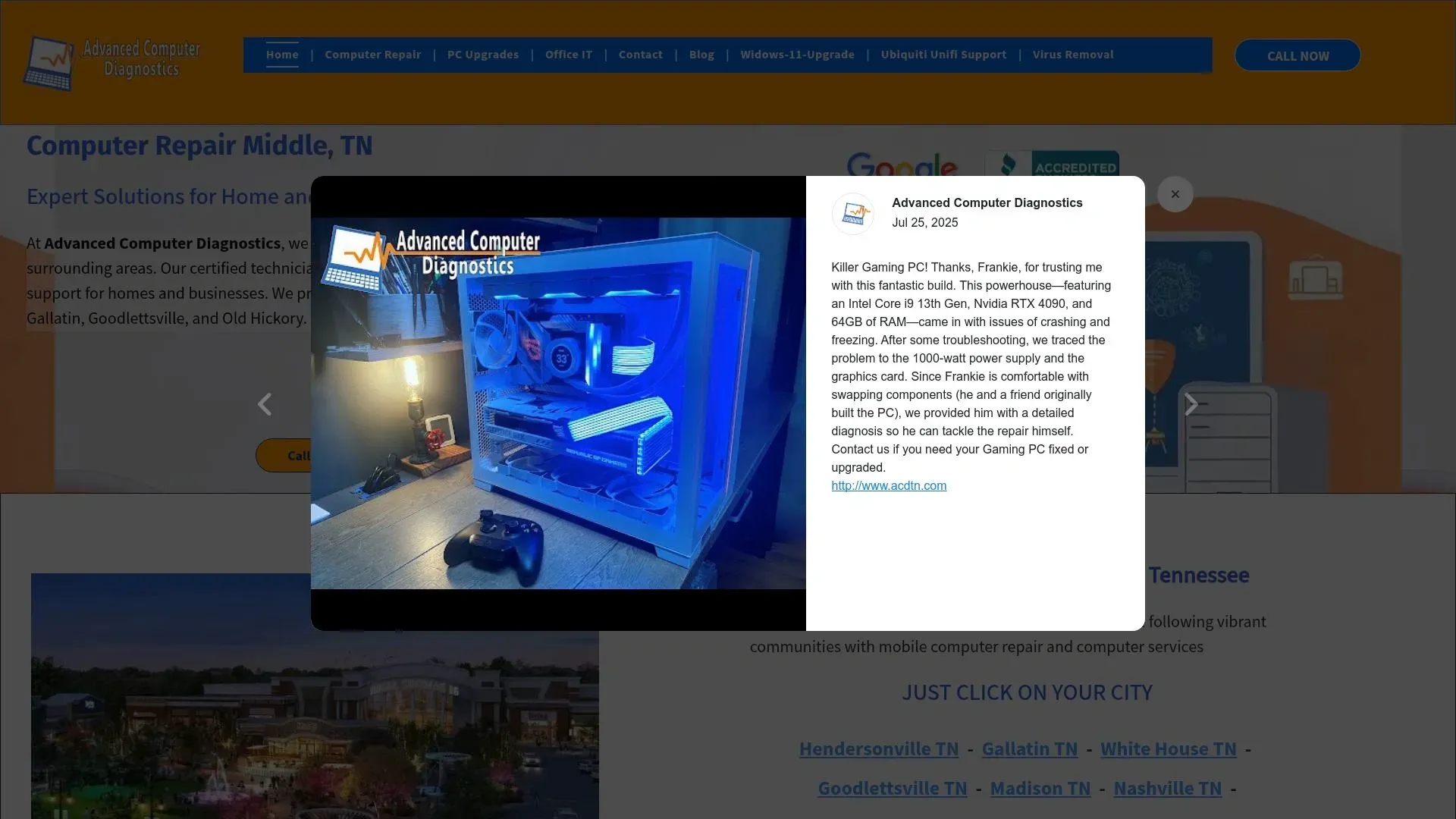
With fast turnaround, transparent pricing, and honest advice, you can expect upfront quotes and a satisfaction guarantee. Whether you need on-site support or remote troubleshooting, their customer-centric approach makes PC repair stress-free and reliable.
Pro Tips for Maintaining Your PC and Preventing Future Issues
Keeping your computer in top shape is easier than you may think. With a few habits and the right approach, you can make pc repair local less frequent and extend your device’s lifespan. Let’s dive into some practical pro tips to help you avoid common pitfalls and keep your system running smoothly.
Regular Maintenance Routines
Routine care is the first line of defense for any pc repair local user. Dust and debris can clog fans, causing overheating and sluggish performance. Schedule monthly cleanings using compressed air and a soft brush—especially around ventilation grilles and fans.
Keeping your software up to date is just as crucial. Set your system to auto-update, but check manually once a month to catch missed updates. Outdated drivers or operating systems often cause unexpected crashes, which can lead to pc repair local emergencies.
Monitor your system’s health with free tools like CrystalDiskInfo for hard drives or HWMonitor for temperatures. A simple habit, such as checking system health every few weeks, can prevent major headaches down the road.
- Clean dust from vents and fans monthly
- Check for Windows or macOS updates
- Update drivers for graphics, network, and peripherals
- Monitor disk and temperature stats
Best Practices for Data Protection
Losing precious files is every pc repair local owner’s nightmare. Set up automated backups—both local (external hard drives) and cloud-based (services like Google Drive or OneDrive). This double layer ensures you’re protected from hardware failure or accidental deletion.
Strong passwords are essential. Use a password manager to generate unique logins for every account. Enable two-factor authentication wherever possible.
Be vigilant about phishing and malware threats. Never click unknown links or download suspicious attachments. For a deeper dive into privacy concerns during repairs, check out the No Privacy in Electronics Repair Industry Study, highlighting the importance of securing your data before any servicing.
- Schedule daily or weekly automatic backups
- Use password managers and 2FA
- Stay updated on common scams
Optimizing Performance for Longevity
Many users wonder: should you repair or upgrade? Optimizing your pc repair local experience means knowing when to invest in upgrades and when to consider a new system.
Start with easy wins: disable unnecessary startup programs using Task Manager or System Preferences. This can dramatically improve boot times.
If your system feels slow, upgrading RAM or switching to an SSD often delivers immediate results. Still unsure? Use the table below to decide:
| Issue | Repair/Upgrade | Replace System |
|---|---|---|
| Slow boot | SSD upgrade | No |
| Frequent crashes | RAM upgrade | Maybe |
| Outdated CPU | No | Yes |
| Locking Up | Driver updates | No |
Staying Informed: Educational Resources for PC Beginners
Knowledge is power, especially for pc repair local newcomers. There are countless resources to guide your journey.
Explore websites like How-To Geek or Tom’s Hardware for tutorials. YouTube channels such as Linus Tech Tips and Dave2D offer visual guides on common repairs.
Don’t overlook local opportunities. Many community centers and libraries offer beginner workshops or repair cafés, where you can learn hands-on skills and even connect with local experts.
- Bookmark trusted tech websites
- Subscribe to repair-focused YouTube channels
- Attend local workshops or webinars
Stay curious, and you’ll always be ahead of the curve.
Environmental Responsibility in PC Ownership
Responsible pc repair local habits don’t just help your wallet—they help the planet. Before tossing old hardware, consider recycling through certified e-waste programs. Many local repair shops and electronics retailers offer recycling services.
If your components are still usable, donate them to local schools or charities. Repairing and reusing parts reduces e-waste and supports your community.
- Recycle electronics at certified centers
- Donate parts to local organizations
- Repair before you replace to minimize waste
By making eco-friendly choices, you contribute to a sustainable future while getting the most out of your devices.
Local Resources and Support Networks for PC Repair Beginners
Navigating the world of pc repair local can feel daunting, but you don’t have to go it alone. Whether you’re troubleshooting your first blue screen or seeking to upgrade your system, leveraging local resources and support networks can make all the difference.
Finding Trusted Local Repair Shops
The first step in your pc repair local journey is finding a reliable shop nearby. Start by searching online directories, reading customer reviews, and asking friends for recommendations. Supporting small businesses not only keeps money in your community but often leads to more personalized service.
Look for shops with certified technicians, transparent pricing, and clear communication. Some, like the Expert PC repair specialist, offer upfront quotes, honest advice, and satisfaction guarantees. Don’t hesitate to call ahead and ask about their experience with your specific issue or brand.
Community Groups and Peer Support
Tapping into community groups is another fantastic way to enhance your pc repair local experience. Online forums, such as Reddit’s r/techsupport or local Facebook groups, provide quick answers and troubleshooting tips from fellow enthusiasts.
In-person options like tech meetups and repair cafés let you learn hands-on. These gatherings encourage knowledge sharing, making complex repairs less intimidating. You’ll find that connecting with others facing similar challenges can boost your confidence and expand your skillset.
Leveraging Manufacturer and Retailer Support
Sometimes, your pc repair local needs can be met by leveraging manufacturer warranties or retailer tech support. If your device is still under warranty, start with the manufacturer for free repairs or replacements. Many retailers now offer extended service plans that cover accidental damage or routine issues.
Compare these options to local shops to ensure you’re getting the best deal and quickest turnaround. Keep in mind, local repair shops may offer more flexibility for out-of-warranty devices and personalized service that large chains can’t match.
Building Your Own Support Network
Don’t underestimate the power of community when it comes to pc repair local tasks. Connect with neighbors or friends who have technical know-how. Organize small repair sessions or skill-sharing events at community centers or even your own home.
Some neighborhoods have formed tech clubs where members help each other with basic repairs or upgrades. These initiatives foster a supportive environment and can lead to lasting friendships, all while saving money on professional services.
Useful Apps and Tools for Ongoing Support
Staying on top of your pc repair local routine is easier with the right digital tools. Download mobile apps for system diagnostics, troubleshooting guides, and maintenance reminders. Some apps connect you with live chat support or walk you through repairs step by step.
Set reminders for regular cleanings or software updates to prevent future issues. Bookmark online help resources and keep a list of trusted local shops handy for emergencies. With these tools, you’ll feel empowered to tackle problems as they arise.
Now that you’ve got the basics of PC repair and know when it’s smart to call in a pro, remember—you’re never alone on this tech journey. Whether you’re tackling slowdowns, weird error messages, or just want honest advice before opening up your computer, the certified experts at Advanced Computer Diagnostics in Hendersonville are here to help. They’re all about fast service, clear pricing, and keeping your data safe—so you can get back to what matters. If you’re ready for friendly support or have a question, just Contact Us today.
For more information on small business cybersecurity best practices, see guidance from the Cybersecurity and Infrastructure Security Agency (CISA) and the Microsoft Security Blog.
Why Trust Advanced Computer Diagnostics
When it comes to safeguarding your computer, trust in Advanced Computer Diagnostics. Our standout performance, with an A+ BBB Rating and 4.9-star Google Reviews, showcases our commitment to excellence. As a proud Hendersonville Chamber of Commerce member, we are deeply rooted in the community. Our PC SafeLock all-in-one computer security ensures your PC is protected to the highest level and our over 10 years of experience in invaluable.
Contact Advanced Computer Diagnostics
Address: 290 Indian Lake Rd, Hendersonville, TN
Phone: (615) 293-1687
Website: www.acdtn.com
Email: newclient@acdtn.com
Member: Hendersonville Chamber of Commerce
Follow us on Facebook, Google Business Profile, and X (formerly twitter)
SHARE IT


